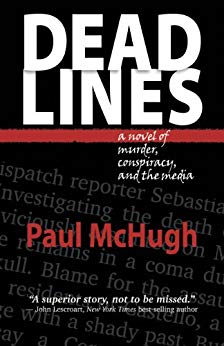California North Coast Series
Paul McHugh, Outdoors Writer
September 09
She was a fancy side-wheel steamer, a hybrid assisted by a square-rigged sails on two masts. The Brother Jonathan was built in New York in 1850 to serve East Coast passengers heading for the Gold Rush. Fifteen years later, under new owners, she was assigned to a run from San Francisco to Portland.
In July of 1865, she was tied up at a Frisco wharf, taking on so much cargo, that her new captain, Samuel DeWolf, objected. (Her previous captain had been shot amid an argument with a Confederate sympathizer.) Railroad equipment, hundreds of barrels of whiskey, hundreds of thousands of dollars in gold (to pay soldiers and pay off reservation Indians), even two camels for the Portland zoo were crammed aboard.
Captain DeWolf was informed he would be replaced if he didn’t shut up. Then a heavy, three-stamp ore crushing machine was lugged on and lashed to the deck.
Now mired in mud at the dock, the Brother Jonathan had to wait for high tide and a pull from a tugboat to get free and wallow off to sea.
On the morning of July 30, after exchanging some cargo in Crescent City, she set course for Portland at 9:30 a.m. By noon, she was battling high wind, and seas “running mountains high,” according to a survivor. DeWolf ordered her to put about. At 1:50 p.m. Jonathan ran hard onto an uncharted rock. She was doomed, caught between that anvil and the hammer of the pounding waves.
Hunks of broken keel bobbed up. Her foremast plunged down through the hull like a spear, only stopping when the main yard jammed atop her rails. The heavy ore crusher broke right through the deck.
Orders were given to abandon ship. But the first boat away capsized, the second to be lowered was bashed by waves and shattered. Only the third, a surfboat carrying the third mate, five women, three children and ten crew managed to get free — just in time to see the Jonathan go down by the bow.
Two hours later, that surfboat bearing the 19 survivors straggled into Crescent City. One might cast a cynical eye at the ratio of crew to passengers. But had there not been so many experienced sailors aboard, maybe no one would have made it. Rescue boats were speedily launched from the port, but forced to turn back by the harsh conditions.
Two days afterward, excited sailors reported seeing more survivors on Seal Rock, offshore. Another boat was launched. Would-be rescuers spent 12 hours rowing out and back, only to report that those “survivors” didn’t happen to be in any trouble at all — they were sea lions.
During the following week, corpses began to wash ashore, from Trinidad Head up into Oregon. One was the editor of the San Francisco Bulletin, James Nisbet. As the ship sank, Nisbet had scribbled a will out in pencil, so his words would not wash away. He included a special note to Almira Hopkins (wife of a San Francisco insurance agent). He folded these missives into a pocket, then tied two life jackets on himself — heightening chances his body could be found.
Nisbet’s note reads: “My dear Almira, A thousand affectionate adieus. You spoke of my sailing on Friday — Hangman’s Day — and the unlucky Jonathan. Well here I am with death before me. My love to you all — to Caspar, to Dita, to Belle, to Mellie and little Myra — kiss her for me. Never forget Grandpa.”
Captain DeWolf, whose body was never found, went down with his new command.









